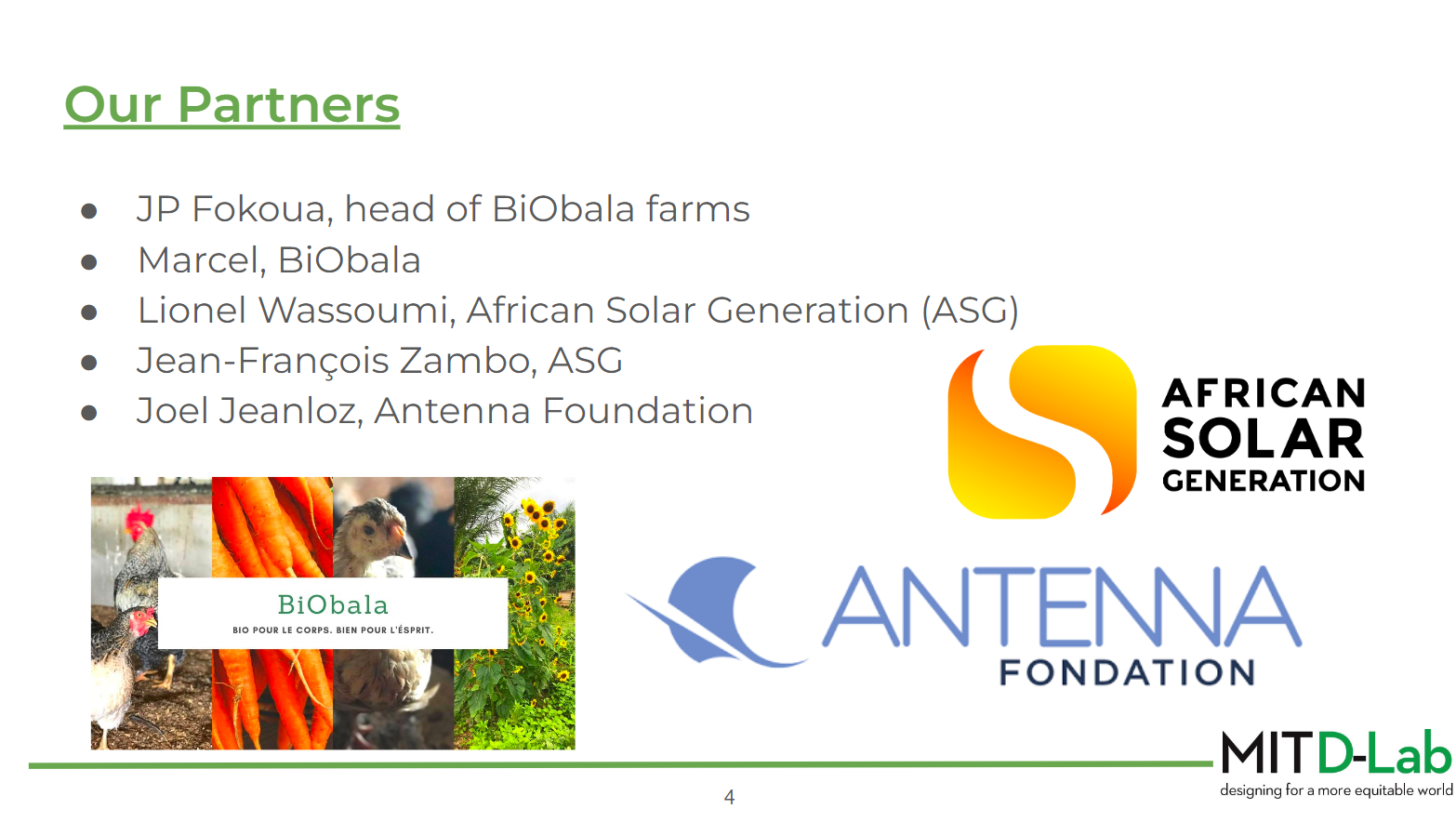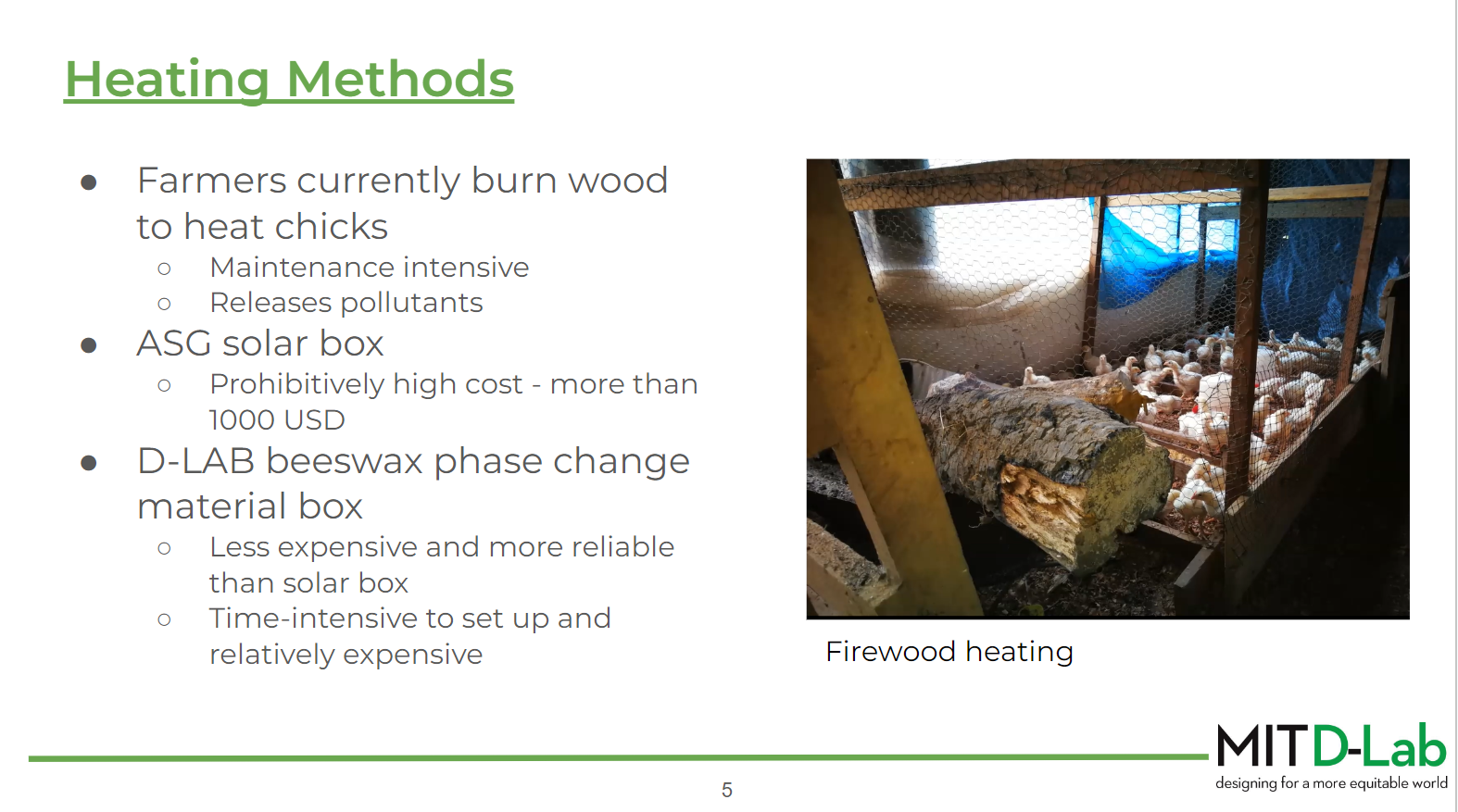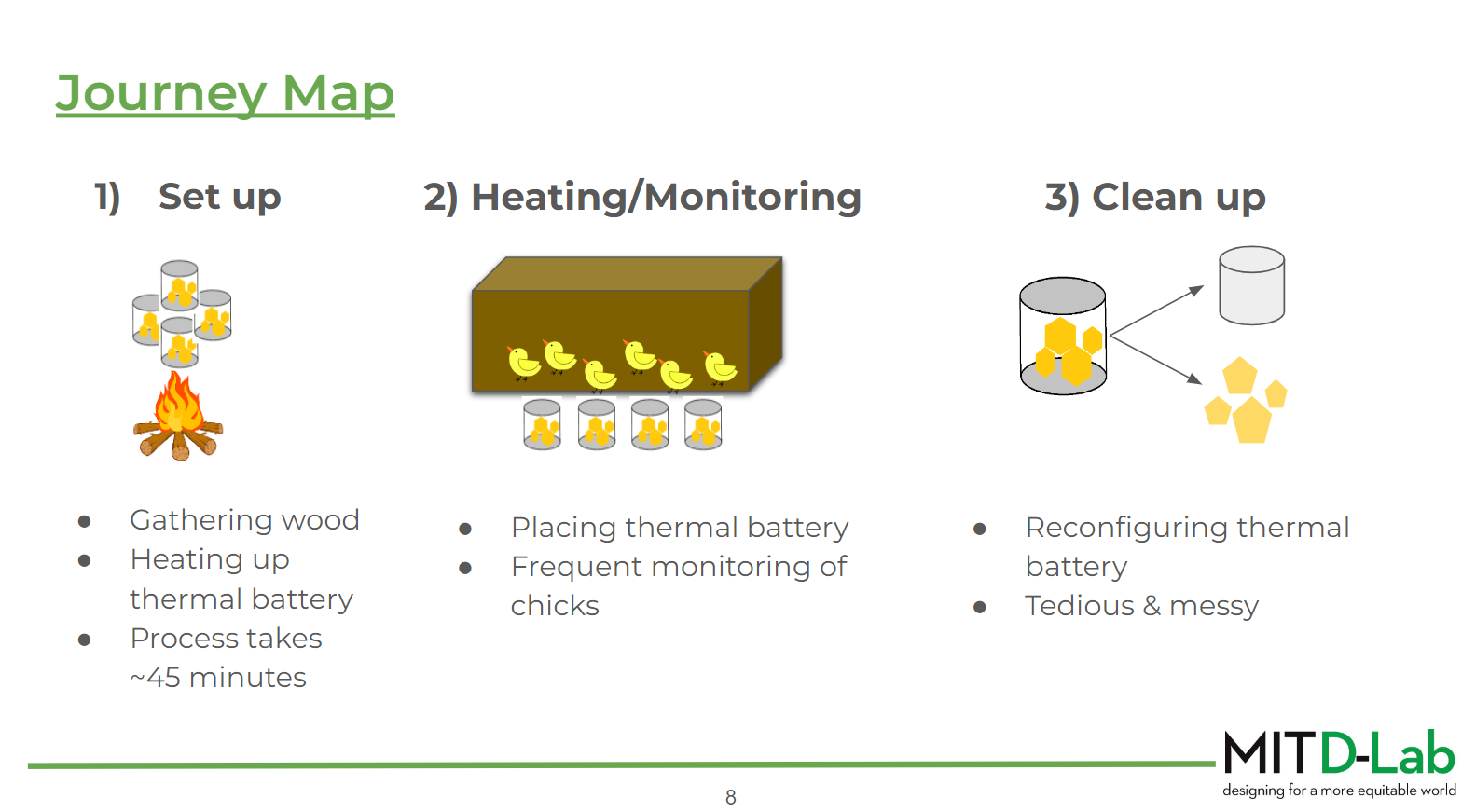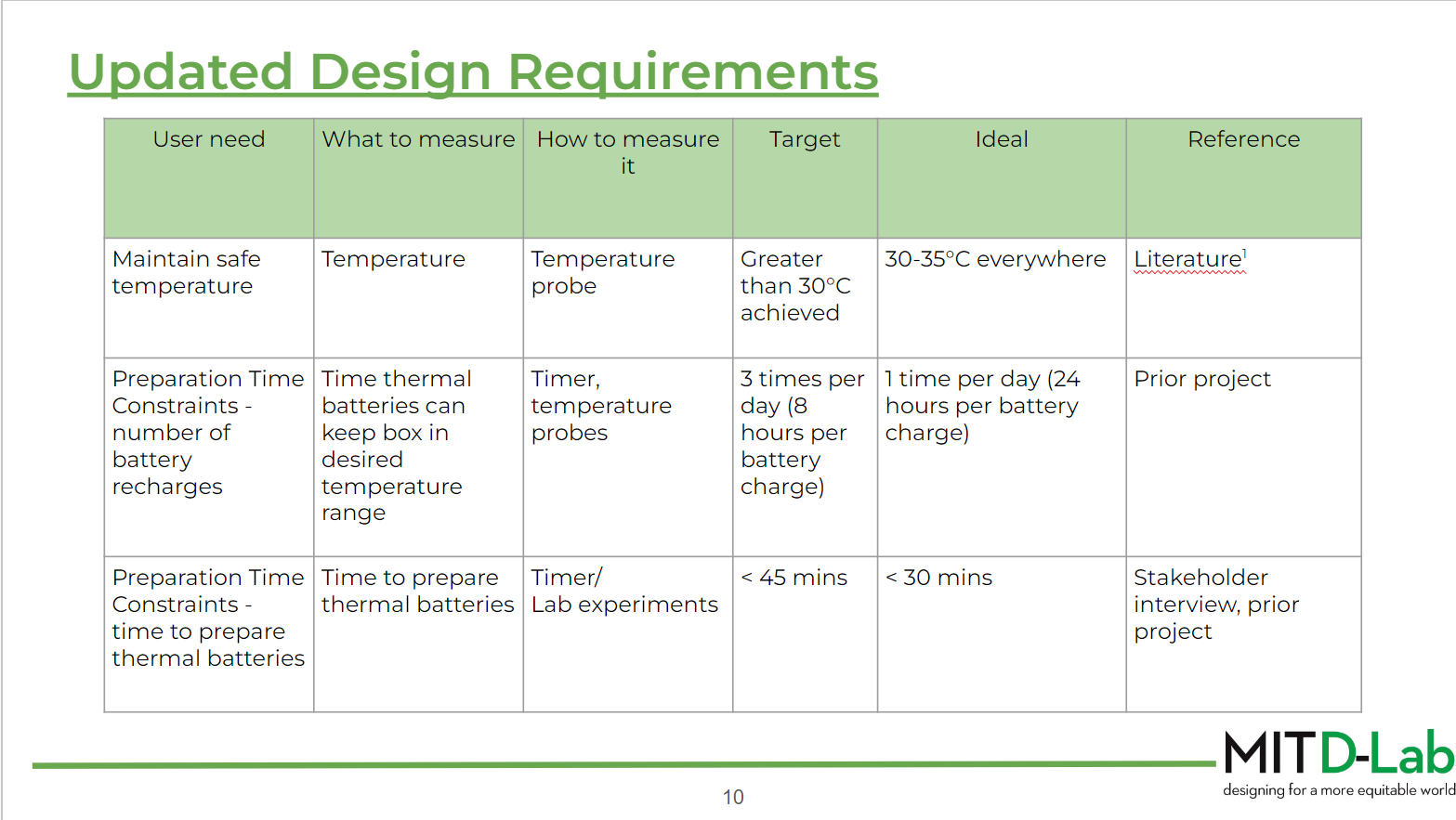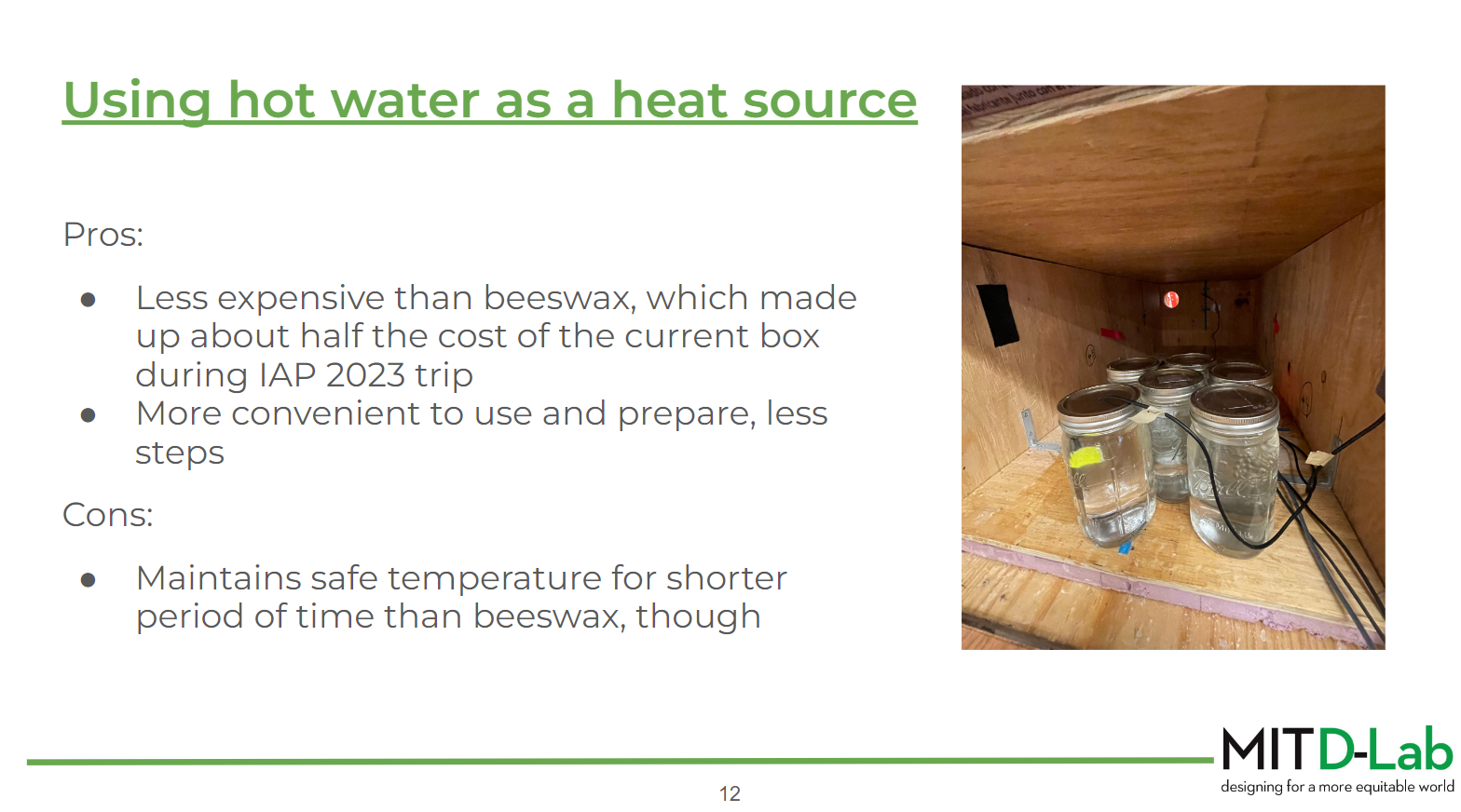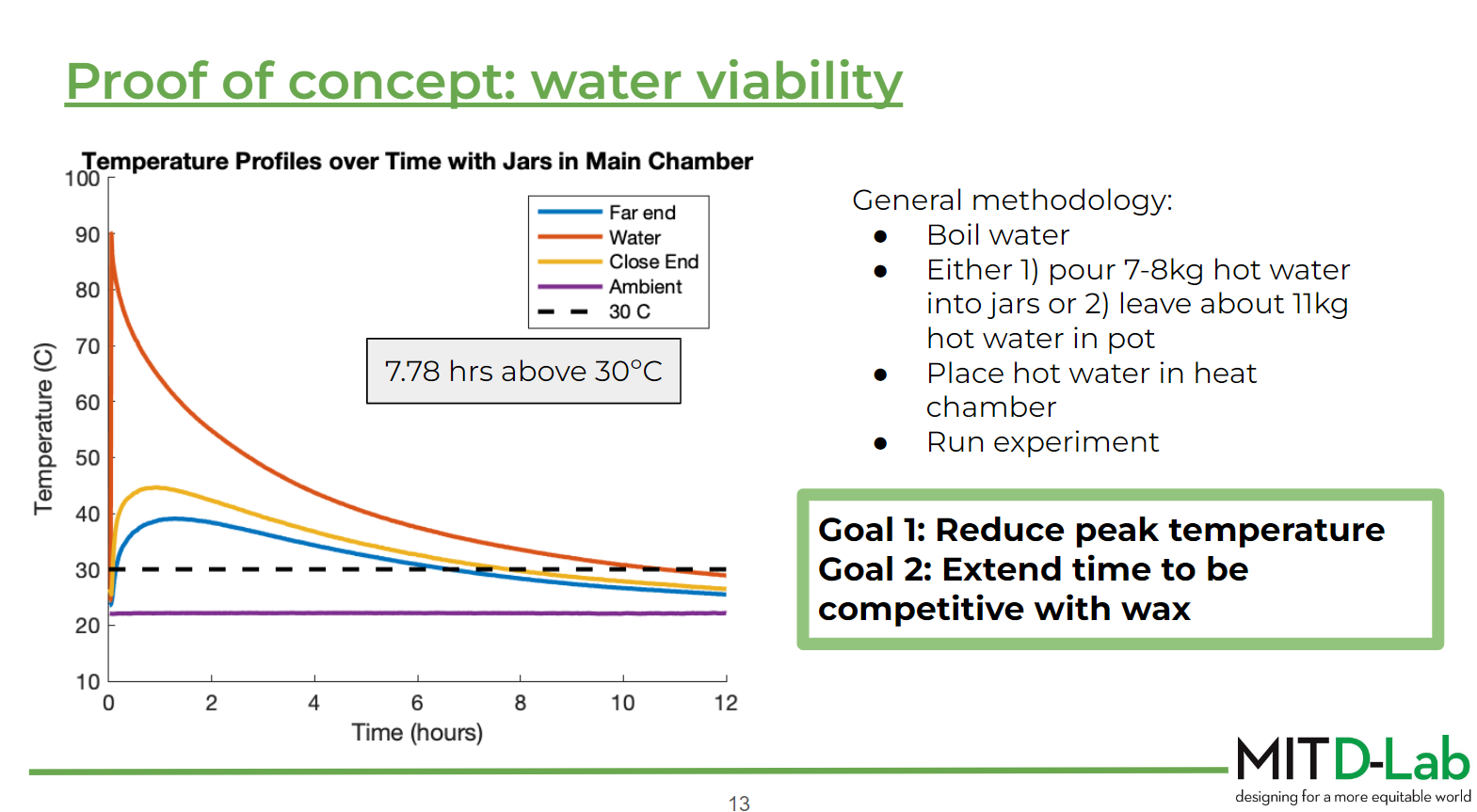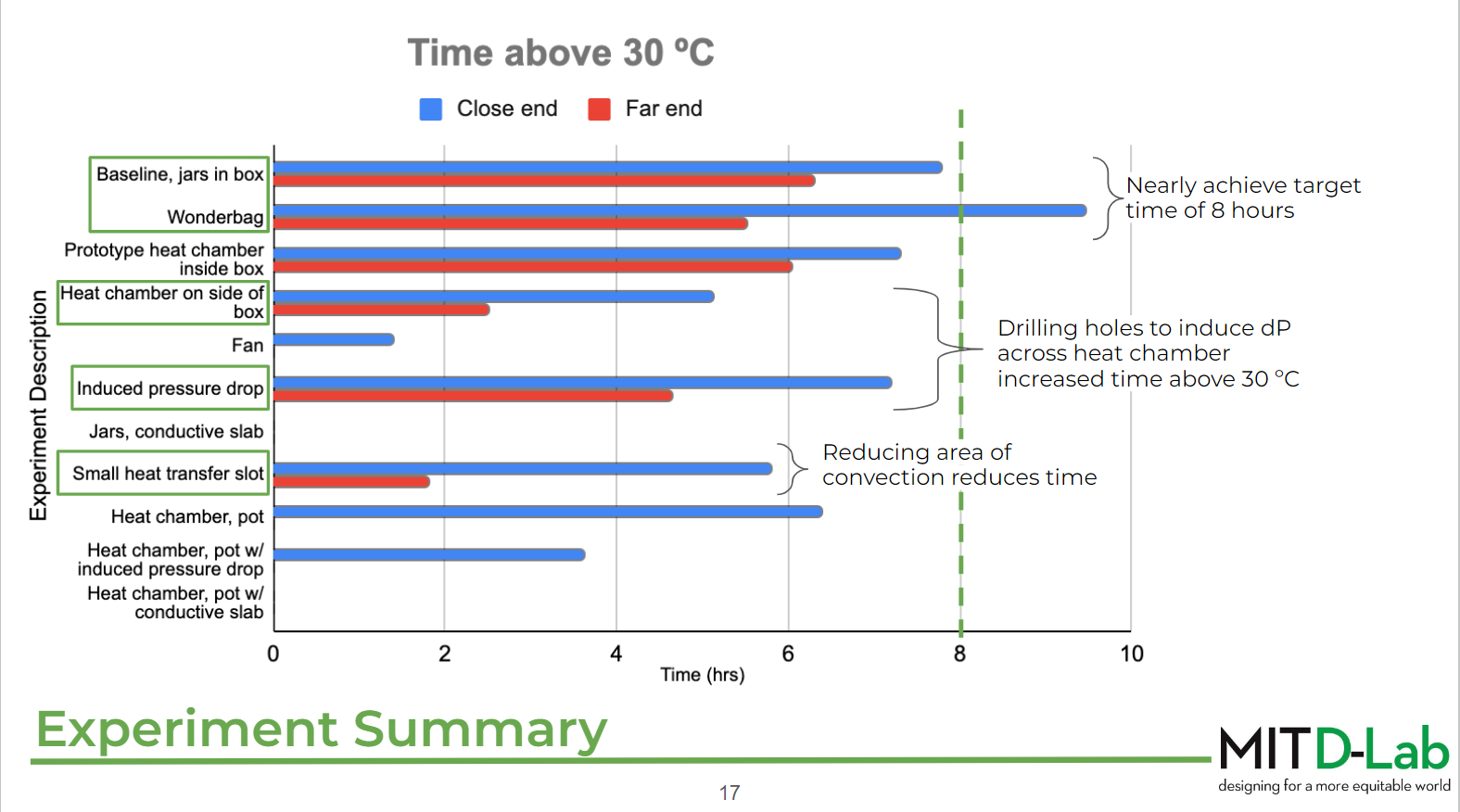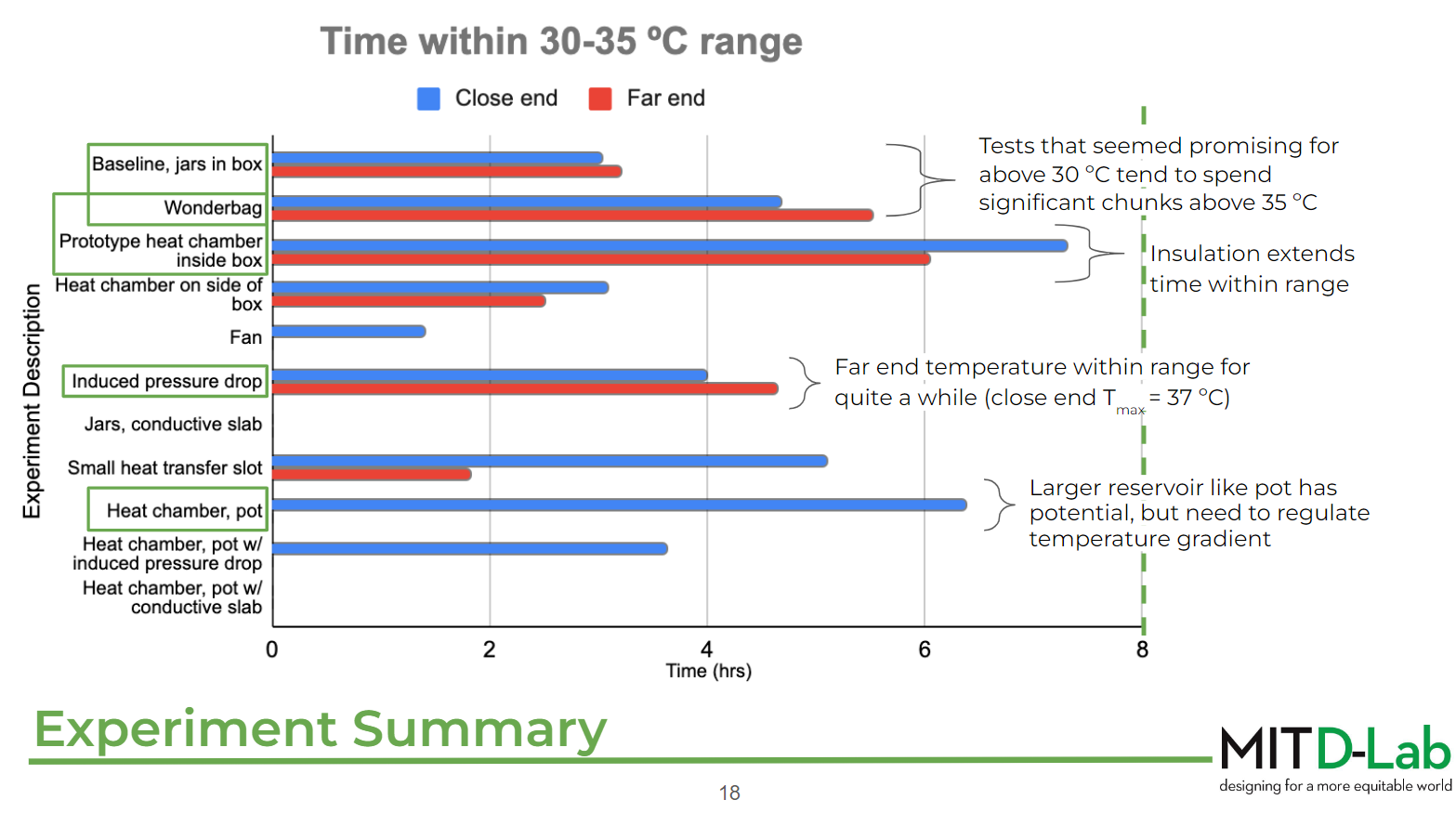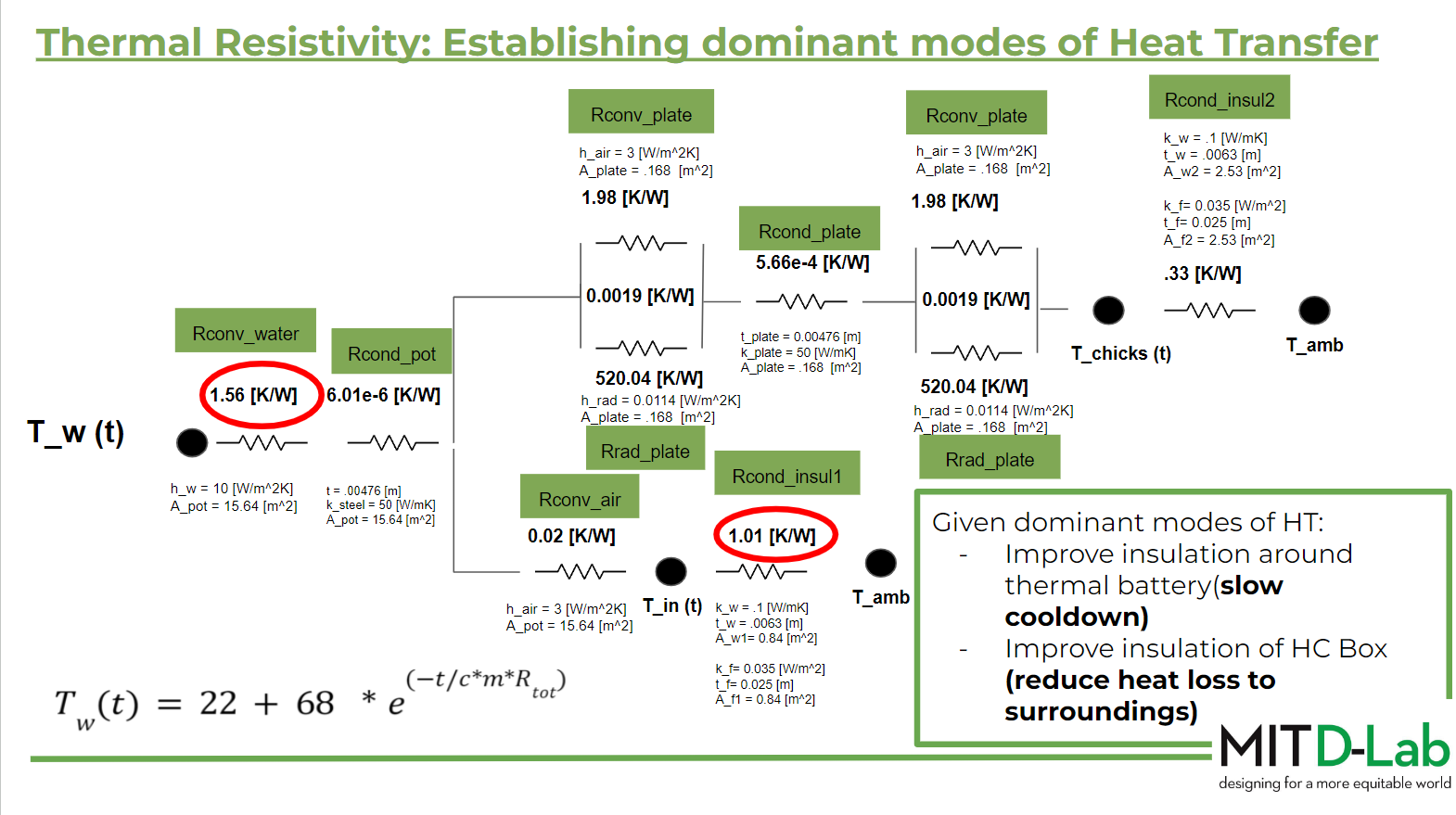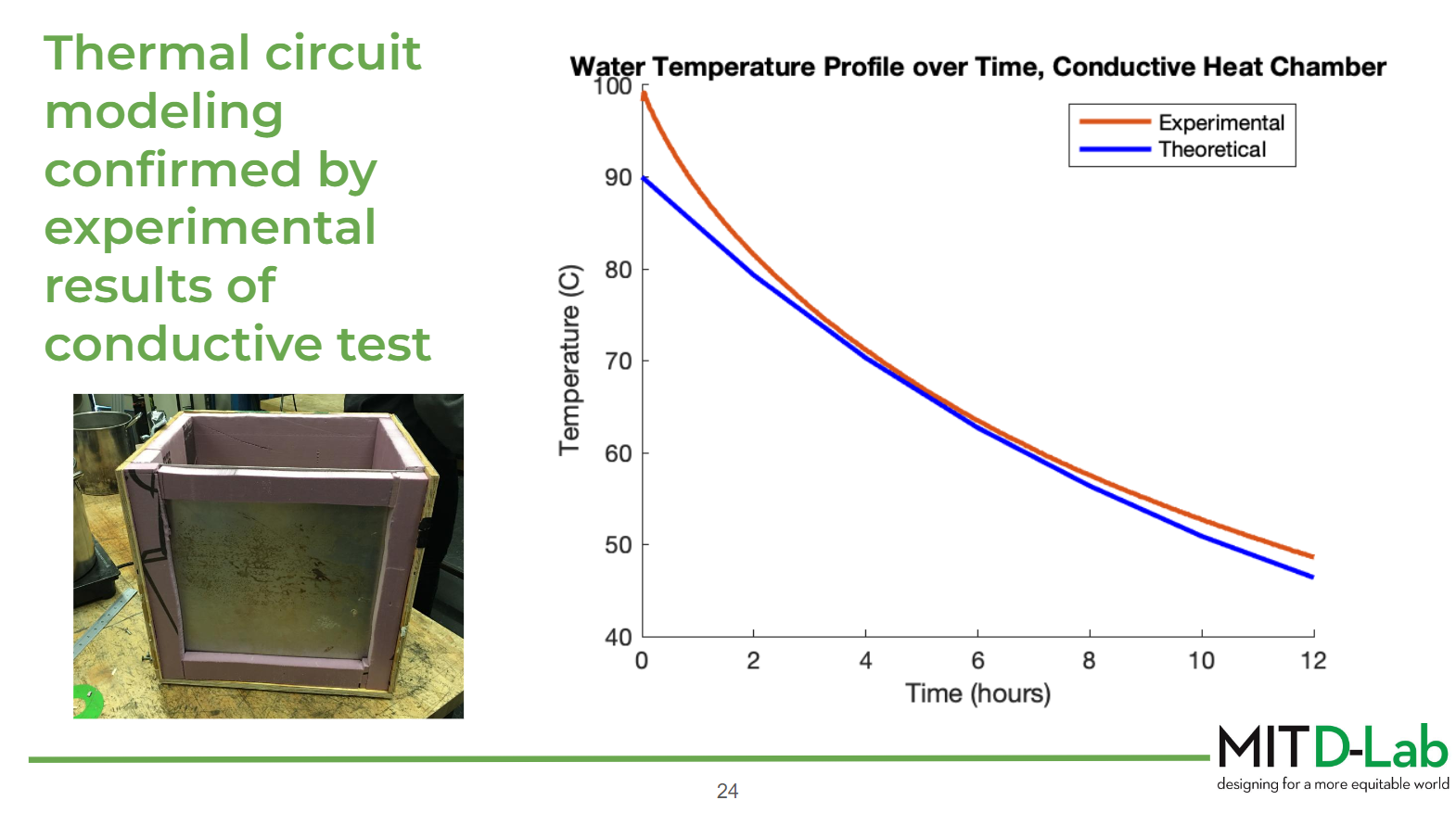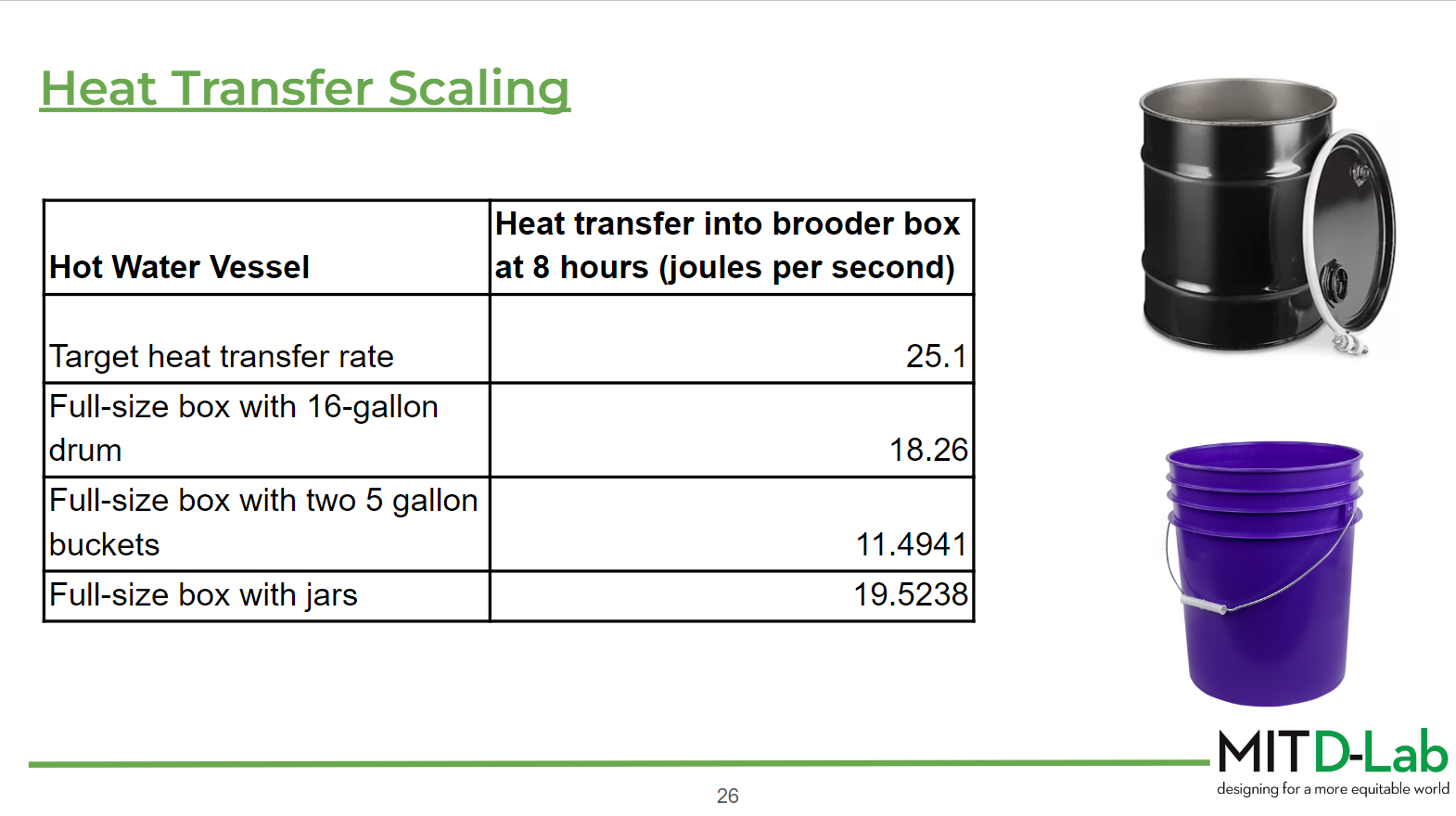MIT D-LAB Chicken Brooders
In my 4th year semester during the spring of 2023, I was in a class at D-Lab. D-Lab is a lab at MIT which works with people around the world to develop and advance collaborative approaches and practical solutions for global poverty. I worked with a small team over the course of the semester to develop a chicken incubator/brooder that could be operated without electricity for poultry farmers in Cameroon. For this project we collaborated with several partners ranging from international farming organisations to indivdual farmers in Cameroon. The partners provided crucial information for our design and were involved in the process from start to end giving feedback and proposing their own ideas. On this page I will take you through our project start to end with slides from our final presentation.
Presentation
To give some background on the problem we were trying to solve, we provided some data on the poultry sector in Cameroon, which makes up a larger portion of their economy and agriculture. The poultry sector in Cameroon continues to grow but in many areas there is not consistent electrical grid acess which poses a problem for chick incubator boxes if they use electricity as the heat source.
During this project our group was fortunate enough to collaborate with the people and organisations listed on the slide on the design of the brooder box. BiObala Farms is an organisation based in Obala focused on sustainable agriculture while African solar generation focuses on proliferating photo-voltaic systems in Cameroon. These two organisations are affiliated with the Antenna Foundation, a swiss based company focused the pursuit of scientific solutions to social and economic problems. over the course of the semester our team was able to interview the various people to gain insight in the enviroment our soltuion would be in and to get feedback on our progress.
At the start of the project we looked at the current common methods for heating the brooder box used by farmers and the method a previous D-Lab team came up with for the same project. The most common way to keep the chicks warm currently is by lighting a fire next to the box and maintaining it. This provides effective heat and is cheap to do but it is labour intensive and releases pollutants the whole time. African Solar Generation devised a chick box that uses photovoltaics to generate heat, which worked well but the cost was prohibitive to farmers. Finally, the previous D-Lab team devised a solution to heat the box using jars of beeswax as thermal batteries (a device that stores and releases heat/thermal energy). The beeswax would be heated up first and then put into jars, releasing heat as the wax solidified. This solution was effective at providing enough heat and was cost effictive however it required an intensive setup process which was undesirable to the farmers.
The current setup for the previous D-Lab thermal batteries is outlined in the slide. As seen steps 1 and 3 are the most complex requiring the wax to be inserted and removed from the jars which was very tricky. Intially our group wanted to focus on reducing the complexity around this heating process so that it would be easier for this solution to be adopted.
After refining our project focus and conducting interviews with our partners, our group defined a list of design requirments for our soltuion to be viable.
Our team considered and tested a few alternate heating methods in order to reduce complexity of the process. Laid out are our overall pros and cons and also the ideas we ended up attemping to pursue (reverse double boiling means pouring in boiling water to the wax container instead of wax into water.
After doing some more testing with reverse double boiling, our group came to the realization that the boiling water itself under the right conditions could make a similarly effective and simpler thermal battery for the box. The main obstacle to overcome would be esnuring those conditions that allow for the water to provide enough heat for enough time.
In order to prove our concept of the water thermal battery we ran a test by placing the jars in the actual brooder box and recording the temperature over a period of time. On the graph above you can see that the box maintains a temperature above our min temp (30 degrees celcius) for about 7.78 hours which seemed to be promising. Our goal after seeing the data was to reduce the peak temperature the box reaches (~45 C on the hotter end) and extend the time in this temp range even more.
Our group performed even more experiments to see what jar placement would be best for increasing time in the temperature range and also to give us some data to use in heating calculations.
Above can be found a summary of the experiments we conducted along with how long they caused the box to remain above 30 C.
Similar to the last slide, this one shows the data from our experiments for how long they stay in our ideal chicken brooder range of 30-35 C. None of them quite reached 8 hours but a few had some results that were promising, mainly the induced pressure drop experiment and our baseline.
Our team also attempted to model a thermal circuit of our heating system in order to find the dominant modes of heat transfer. In this diagram R represents the thermal resistivity of the point in the system while the cond, conv and rad denote the type of heat transfer it is (convection conduction and radiation). Similarly T denotes the temperature at certain points in the system as a function of little t, or time. For the purpose of calculations this circuit includes a metal plate between the heating pot and the main chicken chamber to make it easier to model.
We did an additional test to verify the accuracy of our thermal circuit and the results were within our margin of error.
Finally we did some scaling calculations for our thermal batteries if they were to be used in a larger sized brooder box with different containers serving as the battery casing.
Conclusion
Unfortunately, due to the time constraints of the semester, Our team was not able to further our project into a more concrete end product besides our thermal battery ideas and data. In the next semester of the course this project will be carried on by the next team but the whole process provided great experience on collaborative design with people around the world as well as how to conduct extensive research before starting down a particular path.

